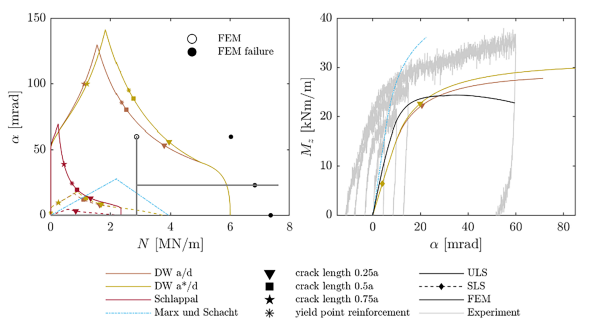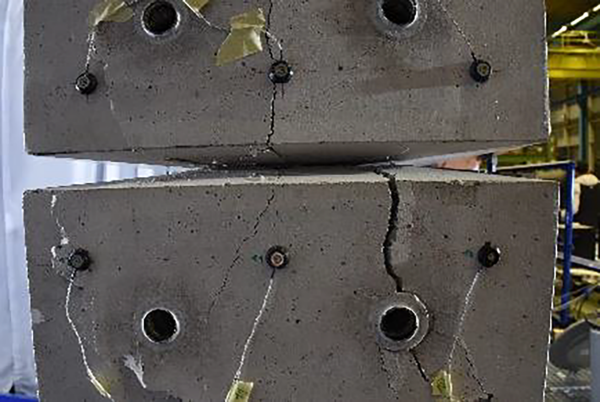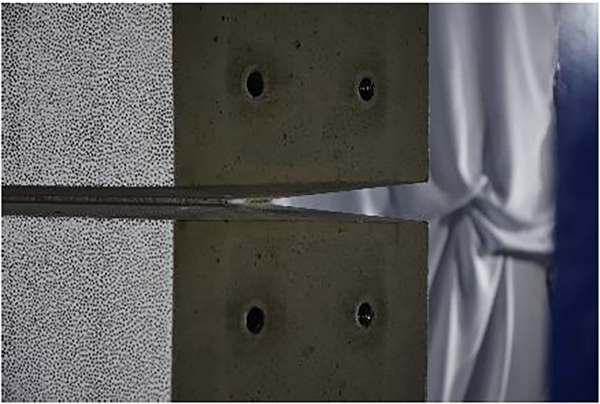Theoretical, experimental, and numerical investigation of concrete hinges
Author: Monica Di Vincenzo
Language: English
Abstract
A concrete hinge is a monolithic construction used to sustain large axial compressive forces while ensuring sufficient rotation capacity without generating large bending moments. During the 60s and 70s, they were widely used in the construction of the highway system in Europe. The empirical dimensioning was mostly based on the research of Leonhardt in the 60s. With the upcoming of mechanical bearings, the utilization of concrete hinges decreased. However, in the past few years, the concrete hinges made a comeback, because of their higher durability and economic benefits. Nevertheless, the need for more reliable dimensioning rules has not been addressed yet.
This master’s thesis's scope is to extend the available mechanical model "Dual Wedge". The stress field model was developed at ETH to determine the ultimate load of partially loaded areas. A proposal for the extension of the Dual Wedge model to include rotation is presented. For this purpose, first, a stress-strain relationship for confined concrete based on Mander is defined. The model takes into account a possible reinforcement in the middle of the throat. The maximum admissible rotation for serviceability limit state is defined using the crack width instead of the crack length on the one hand and the yielding of the reinforcement on the other hand. For the ultimate limit state, the ultimate strain of the reinforcement is used. The validation of the proposed model is done by comparison with past experimental campaigns, with a non-linear finite element analysis and with one large scale experiment conducted at ETH. Furthermore, a preliminary numerical investigation of the influence of the shear force is carried out.
With the help of the experimental and numerical investigation, the proposed extension to include the rotation in the mechanical model could be partly verified. The limiting curve for the maximum compressive strength gives a safe prediction of the ultimate load and at the same time does not underestimate the performance of a concrete hinge under axial load rotation. However, the limitation regarding the maximum admissible rotation could not be verified with the available data. Regarding the shear force, the preliminary investigation showed that both, an increase in rotation and shear force result in a decrease of the ultimate load. Therefore, it is suggested to investigate the shear force always in combination with the rotation. Further experiments and/or numerical analysis have to be carried out. Furthermore, an extension to include the other principal loadings such as shear force, torsion, or bending moment about the strong axis still needs to be addressed.



